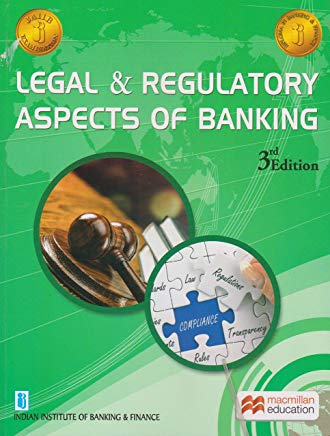JAIIB LRAB Unit 55 - Definition and Features of Company (Year: 2019)
A company formed and registered under this Act, or an existing company'. An existing company means a company formed and registered under any of the former Companies Acts.
FEATURES OF A COMPANY
(a) Registration
A company has to be compulsorily registered under the Companies Act, 1956.
(b) Artificial Legal Person
A company is an artificial legal person which is created by law and can be dissolved by the law alone. It is invisible, intangible and exists only in the eyes of the law. It enjoys many rights of a natural person. A company may enter into contracts in its own name, and it can acquire and dispose property and can be fined under the provisions of the law for violation of law
(c) Independent corporate personality
A company, after incorporation is in law a single person, it has a distinct legal personality. By incorporation under the Companies Act, 1956 the company is vested with a corporate personality which is independent of and different from the members who compose it.
(d) Limited liability
Limitation of liability is an advantage of incorporation of a company. Since under company law, the existence of a company is different from its own members and directors and a company leads its own business existence and since it is itself the owner of its assets and has its own liabilities, the members of the company are not bound to contribute anything more than the nominal value of the shares held by them and their liability ends there even though there may be creditors who may be claiming crore of rupees from the company.
(e) Perpetual succession
An incorporated company never dies. It is a legal entity with perpetual succession. The insolvency or death of members does not affect the continued existence of the company. In spite of a total change in the members of the company, the company will remain the same entity. Members may come and members may go but the company goes on forever.
(f) Separate property
On incorporation the company becomes the owner of its capital and assets. The company is capable of holding property in its own name.
(g) Transfer of shares
The Companies Act, 1956 states that shares or other interest of any member in a company shall be moveable property, transferable in the manner provided by the articles of association. A shareholder may sell his shares in the open market and get back his money without changing the capital of the company.
(h) Common Seal
As a company is an artificial legal person, it is not capable of signing documents for itself. Law provides for a common seal with the name of the company engraved on it as a substitute for its signature. Any document bearing the common seal of the company is legally binding on the company. However a common seal cannot be affixed by any director.
(i) Corporate veil
Although a company is a separate legal entity distinct from shareholders in reality it is an association of persons who are the beneficial owners of all the corporate property.
DISTINCTION BETWEEN A COMPANY AND PARTNERSHIP
(a) Registration
Registration of a company is compulsory under the Companies Act, 1956. Registration of a partnership is not compulsory under the Indian Partnership Act, 1932.
(b) Number of members/partners
Minimum of two and maximum of fifty in case of a private company and a minimum of seven and no limit on maximum number of members in case of public company. Minimum number of two persons is required to form a partnership. The maximum number is ten for banking business and twenty for any other business.
(c) Legal status
A company has a legal existence separate from its own members and is viewed as a separate legal person from its members. A firm does not have, a separate legal existence different from its own partners.
(d) Ownership of property
The property of the company is owned by the company itself and not its members as the company has a separate legal existence. The property of the firm is owned by the partners themselves and not by the firm as a firm does not have a separate legal existence different from its own partners.
(e) Management
The company is managed by a board of directors elected by the shareholders. A partnership is managed by the partners except the dormant and sleeping partners.
(f) Perpetual existence
A company has a perpetual existence.
A partnership does not have a perpetual existence.
(g) Contracts
A member of the company can contract with the company. A partner cannot contract with the partnership firm.
(h) Liability
Except in case of a company with unlimited liability, the liability of the members of the company is limited. The liability of partners in a partnership is unlimited.
(i) Transfer
A transferee of shares in a company becomes a member of the company and the consent of all members is not required to become a member. A person can become a partner in a partnership firm with the consent of all the partners.
(j) Death
The death of any or all members of the company does not determine (end) the existence of the company. Death of a partner dissolves the partnership unless the partnership deed provides otherwise.
(k) Agency
The members of a company are not the agents of each other or of the company. Every partner of a firm is an agent of the other.
JAIIB Study Material
| JAIIB Paper 1 Study Material |
| JAIIB Paper 2 Study Material |
| JAIIB Paper 3 Study Material |


